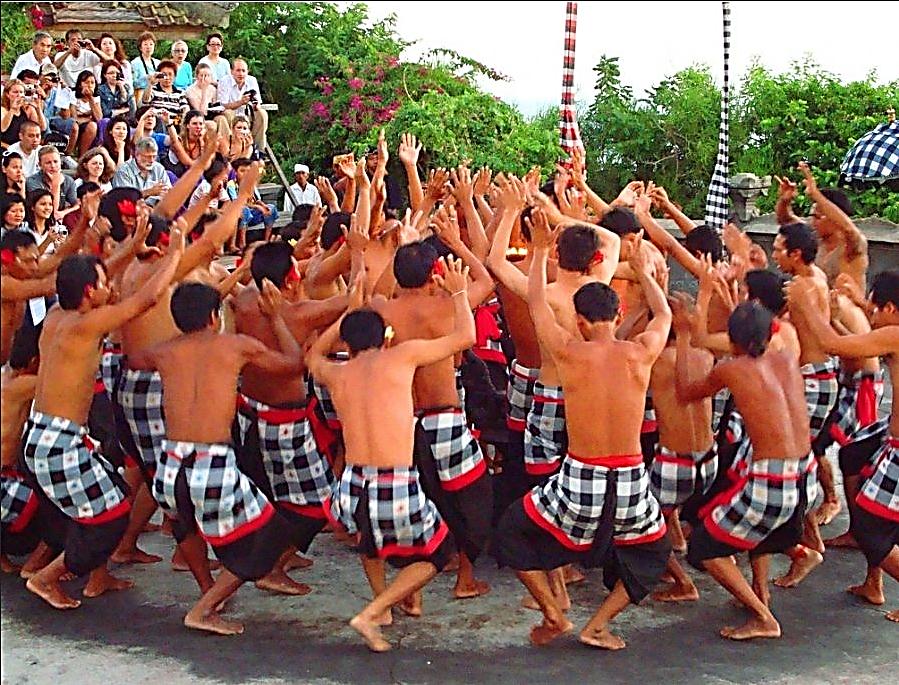Kecak dance is a dance art that originates from Bali. This Kecak dance art is performed by dozens of male dancers sitting in a row in a circular pattern and with a certain rhythm calling out “cak, cak, cak” and raising both arms.
In the book by Resi Septiana Dewi entitled “Diversity of Indonesian Dance Arts”, when dancing the Kecak dance the dancers sit in a circle and wear a typical Balinese cloth with a checkered pattern like a chessboard which is placed at the waist. Some dancers also play characters such as Rama, Shinta, Ravana and Hanoman.
Here are some facts about the Kecak dance originating from Bali:
1. History
In the 1930s, a Balinese artist named Wayan Limbak and a German painter named Walter Spies created the Kecak dance. This dance was inspired by traditional rituals carried out by the Balinese people which were then adapted from the Ramayana story in Hindu belief to be performed as an art performance when tourists come to Bali.
The Kecak dance is usually performed by dozens of bare-chested men wearing checkered cloth from the waist to the top of the knees.
The Kecak dance was first performed in just a few villages, one of which was Bona Village, Gianyar. However, it has grown to all regions in Bali and is always presented during activities such as festivals held by the government and the private sector.
2. Number of Kecak Dancers
Generally, the Kecak dance is played by 50 male dancers. All the dancers will make a “cak” sound to form a cappella music. One person will act as the leader who provides the initial tone, another person will act as a stressor whose job is to provide high or low tone pressure and another person will act as the mastermind who will deliver the storyline.
In 1979, the Kecak dance was performed by 500 dancers. However, this record was broken by the Tabanan Regency Government which held a colossal Kecak with 5,000 dancers on September 29 2006.
3. Kecak Dance Movements and Properties
Kecak dancers’ movements do not have to follow the standards of dance accompanied by gamelan. So in this Kecak dance the dancer’s body movements are more relaxed and what is prioritized is the storyline and sound combination.
The Kecak dance is also called the sanghyang ritual. In this dance there are several props that can be seen, namely burning embers, frangipani flowers, rattle bracelets, black and white scarves, masks and offerings which make the Kecak dance seem even more sacred and mystical.
4. The meaning of the Kecak Dance Performance
When watching the Kecak dance, make sure you read the brief script provided when purchasing tickets to understand the meaning of the Kecak dance.
The Kecak dance is a shangyang ritual or tradition of rejecting evil which includes the story of the Ramayana in it. The Kecak dance tells the story of the search for Empress Shinta, King Rama, assisted by Hanoman. Hanoman then destroyed the place where Empress Shinta was being held by burning it. However, Hanoman was surrounded by the King and Ravana’s soldiers and almost burned.
In the beginning, King Rama suffered a defeat, but it did not diminish King Rama’s determination to save his queen. King Rama prayed fervently and then tried again. In the end King Rama was able to save his Queen.
So the meaning of the moral value in this Kecak dance is that sincere love will win with prayer and sincerity.
5. Kecak Dance Performance Location
Watching the Kecak dance can be done in several locations. One of them is Pura Luhur Uluwatu and also Garuda Wisnu Kencana.
However, during this pandemic, Kecak dance is a bit different. The dancers wear PPE and the audience is required to keep their distance to prevent the corona virus.











